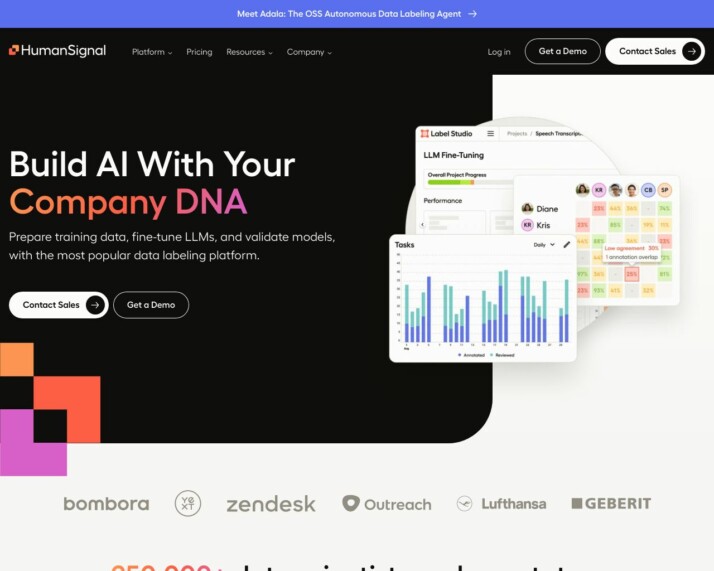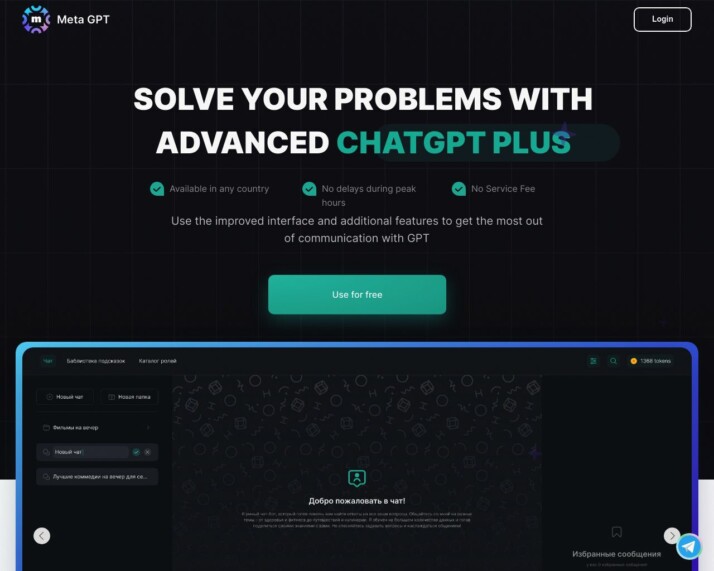Table of Contents
Introduction
In this article, we provide a comprehensive comparison between Adala and MetaGPT, two leading AI solutions. We delve into the distinct features, target audience, and overall performance of each platform. By the end, you’ll have a clear understanding of which AI solution is best suited for you.
So, whether you’re a software developer, project manager, startup founder, or AI enthusiast, keep reading to discover the perfect AI solution that will elevate your business to new heights.
Overview of Adala – A Unique Offering
Adala is an innovative framework with a unique offering that includes services like data labeling, classification, and summarization. It’s best suited for data processing tasks, particularly those based around text.
Adala’s target audience primarily includes AI Engineers and Machine Learning Researchers. AI Engineers can leverage Adala to architect and design agentic systems, thus simplifying the complexities of machine learning. For researchers, Adala offers an experimental platform for problem decomposition and causal reasoning.
The unique features of Adala include a learning framework where agents learn from provided ground-truth datasets and human feedback. This approach ensures a high degree of reliability. Additionally, the modular architecture of Adala encourages community contributions, thereby promoting collaborative problem-solving.


Furthermore, Adala’s agents have memory and context capabilities, enabling them to learn and improve over time from environmental interactions. However, there’s an essential consideration that these agents operate independently in terms of learning but do not function independently without being prompted.
In terms of vision, Adala’s primary goal is to increase efficiency and reduce the costs of data labeling, while maintaining high quality through human guidance. Thus, Adala stands out as an open-source framework that aims to create customizable autonomous agents specialized for data labeling tasks.
To summarize, Adala could be your go-to platform if you’re looking to develop sophisticated AI solutions, especially in the realm of text-based data processing tasks.
An In-Depth Overview of MetaGPT: The Future of AI-Driven Software Development
MetaGPT is designed to appeal to a broad spectrum of professionals in the software development and technology sectors. Designed for software developers and engineers, product and project managers, startups, entrepreneurs, and even tech innovators looking for cutting-edge solutions, MetaGPT provides a comprehensive range of features and applications to cater to their specific needs.


For developers, the automatic code generation and quality compliance feature of MetaGPT offers a uniquely efficient workflow. Project managers, on the other hand, can benefit from the framework’s ability to manage an entire software development project, right from inception to QA.
The one-prompt setup feature that streamlines the creation of a new software company is a boon for startups and entrepreneurs. Also, comprehensive automation solutions make MetaGPT attractive to organizations looking to automate their software development processes.
In essence, the target audience of MetaGPT includes professionals interested in:
- Streamlining complex software developments,
- Automating repetitive tasks,
- Enhancing project management tasks,
- Innovating in technology, and,
- Exploring new uses of AI in software development.
What sets MetaGPT apart from other AI solutions includes unique features like comprehensive automation, collaboration among specialized agents, and the Global Memory Pool. The latter allows agents to draw upon past interactions, making the system more adaptable and efficient.
The MetaGPT framework incorporates the advanced GPT-4 or GPT-3.5 models from OpenAI, making it capable of processing multi-modal information. This means it can autonomously perform complex tasks and provide detailed audit logs for activities, errors, and debugging. This functionality is ideal for environments that require multi-faceted AI capabilities.
One of the main visions of MetaGPT seems to be the revolutionization of software development through AI. It aims to automate the software development lifecycle fully, making it more efficient and scalable. Thus, with a significant focus on autonomous operation and advanced memory management, MetaGPT presents a notable advancement in the field of AI-driven software engineering.
Adala and MetaGPT: A Detailed Feature Comparison
Understanding the features and capabilities of Adala and MetaGPT is crucial for selecting the right Large Language Model (LLM) platform. These platforms enable users to effectively achieve their developers needs, power innovations, and propel forward into an AI-powered future.
Here, we have a comprehensive table where we compare the key features of Adala and MetaGPT, helping you to visualize their major differences and similarities and make an educated decision.
| Features | Adala | MetaGPT | SmythOS |
|---|---|---|---|
| Hosted Agents (Dev, Production) | ❌ | ❌ | ✅ |
| Environments (Dev, Production) | ❌ | ✅ | ✅ |
| Problem-Solving Capabilities | ✅ | ✅ | ✅ |
| Human-AI Interaction | ✅ | ✅ | ✅ |
| Audit Logs for Analytics | ❌ | ❌ | ✅ |
| Deploy as GPT | ❌ | ✅ | ✅ |
| Classifiers | ✅ | ❌ | ✅ |
| Scalability | ❌ | ✅ | ✅ |
| Foundation AIs | ✅ | ✅ | ✅ |
| Huggingface AIs | ❌ | ✅ | ✅ |
The above table represents a balanced comparison of Adala and MetaGPT features. Given the unique features of each platform, the utility for each end-user varies based on their individual requirements.
For instance, the ability to deploy as GPT is one of the compelling features MetaGPT offers, and it could be game-changing for users requiring this functionality.
On the other hand, Adala provides classifiers, which might be of paramount interest for users working on categorization tasks. Even so, both LLM platforms strive to improve Human-AI interaction and offer Foundation AIs, making them a decent choice regardless of your necessity.
Intended Audience and Users for Adala and MetaGPT
The Adala framework by HumanSignal and MetaGPT are powerful tools designed to cater to specific audiences and address their unique needs in the field of software development, project management, and artificial intelligence (AI).
Let’s take a closer look at who these frameworks target and how their features and applications benefit different user groups:
Adala’s Intended Audience
- AI Engineers: Adala is tailored for AI engineers who want to build sophisticated AI agent systems without delving deep into the complexities of machine learning algorithms. It provides a platform to develop production-level agent systems by abstracting low-level machine learning to the framework and leveraging large language models (LLMs). This makes it suitable for engineers looking to develop sophisticated AI solutions.
- Machine Learning Researchers: Adala offers an environment for researchers to experiment with complex problem decomposition and causal reasoning. It provides a base for testing and refining new methodologies and techniques in AI and machine learning.
Adala’s Features and Applications
Let’s take a closer look at some of Adala’s key features and applications:
- Data Processing Tasks: Adala specializes in text-based data processing tasks like classification and summarization, making it suitable for tasks involving plain text file analysis and processing.
- Problem-Solving Capabilities: Adala’s agents are capable of solving complex tasks such as data labeling, classification, and summarization, indicating strong problem-solving capabilities.
- Human-AI Interaction: Adala allows interaction with AI agents, particularly through Python notebooks, providing a user-friendly interface and communication protocols, especially for data scientists.
- Constrained Alignment: Adala aligns with the concept of constrained alignment by allowing the configuration of specific constraints and outputs based on the agent’s learning, operating within ethical and predefined boundaries.
MetaGPT’s Target Audience
The MetaGPT framework is geared towards a tech-savvy audience that includes software developers, project managers, startups, technology companies, and AI enthusiasts. Its unique features and applications are designed to address challenges in software development, project management, and AI-driven automation, making it a valuable tool for these groups.
MetaGPT’s Offering
MetaGPT offers a collaborative framework built around a large language model (LLM) and multi-agent conversations. It encodes human Standard Operating Procedures (SOPs) into these LLM agents to facilitate conversations and collective task performance. Some standout features of MetaGPT include:
- Multi-Agent Conversations: MetaGPT’s core feature is its ability to facilitate conversations between multiple agents, allowing them to perform tasks autonomously or with human feedback. This adaptability makes it highly versatile for different use cases.
- Enhanced LLM Inference: MetaGPT maximizes the performance of LLMs like ChatGPT and GPT-4 by offering enhanced inference capabilities, including tuning, caching, error handling, and templating, optimizing the utility of expensive LLMs.
- Customizable and Conversable Agents: Agents in MetaGPT are not only conversable but also customizable, allowing developers to tailor the agents according to specific task needs, integrating LLMs, human inputs, and various tools.
- Autonomous Operations with Human Feedback: MetaGPT supports both fully autonomous agent operations and human-in-the-loop problem-solving, providing flexibility for applications where human input is essential.
Adala and MetaGPT target different audiences and offer unique features and applications that cater to the needs of software developers, project managers, startups, technology companies, and AI enthusiasts.
Conclusion
The comparison between Adala and MetaGPT reveals their unique features, benefits, and potential drawbacks in the field of AI technologies. Adala is a specialized framework primarily tailored for data processing tasks, while MetaGPT stands out with its multi-agent collaboration and comprehensive automation capabilities.
When it comes to problem-solving capabilities, Adala showcases its ability to handle complex tasks such as data labeling, classification, and summarization, indicating its problem-solving capabilities. On the other hand, MetaGPT excels in complex software development, including CRUD2 code, data analysis jobs, and Python games, surpassing its competitors in code quality and compliance.
MetaGPT’s ease of setup is a notable advantage, allowing the initiation of an entire software company with a single prompt. The framework also offers unique features such as comprehensive automation, collaboration of specialized agents, and a global memory pool, enhancing its learning and adaptability.
It is essential to consider the intended audience and end users of both frameworks. Adala caters to data scientists, while MetaGPT targets professionals, software developers, project managers, startups, and technology companies looking for automation solutions. MetaGPT’s vision revolves around revolutionizing software development through AI-driven automation, offering an innovative approach to complex software engineering.
While Adala serves the needs of data scientists with its specialized capabilities, MetaGPT takes the lead in the field of AI-driven software development with its multi-agent collaboration, comprehensive automation, and innovative approach. Considering its unique features and applications, MetaGPT represents a significant advancement in the AI-driven software engineering domain, making it a valuable tool for software developers, project managers, startups, and technology companies.
While both frameworks have their strengths and benefits, SmythOS stands out as a favored option with superior capabilities, efficiency, and a user-friendly interface. When comparing these frameworks, SmythOS emerges as the preferred choice due to its advanced functionalities and seamless integration with various components.
SmythOS, a leading AI framework, outperforms both Adala and MetaGPT in various aspects. Its advanced features, scalability, and robust infrastructure make it the preferred choice for AI-driven software engineering.
Last updated:
Disclaimer: The information presented in this article is for general informational purposes only and is provided as is. While we strive to keep the content up-to-date and accurate, we make no representations or warranties of any kind, express or implied, about the completeness, accuracy, reliability, suitability, or availability of the information contained in this article.
Any reliance you place on such information is strictly at your own risk. We reserve the right to make additions, deletions, or modifications to the contents of this article at any time without prior notice.
In no event will we be liable for any loss or damage including without limitation, indirect or consequential loss or damage, or any loss or damage whatsoever arising from loss of data, profits, or any other loss not specified herein arising out of, or in connection with, the use of this article.
Despite our best efforts, this article may contain oversights, errors, or omissions. If you notice any inaccuracies or have concerns about the content, please report them through our content feedback form. Your input helps us maintain the quality and reliability of our information.
Alexander De Ridder
Co-Founder, Visionary, and CTO at SmythOS. Alexander crafts AI tools and solutions for enterprises and the web. He is a smart creative, a builder of amazing things. He loves to study “how” and “why” humans and AI make decisions.
Explore All Comparison Articles
Decisions vs. Sola: AI Workflow Automation Showdown
AI-powered workflow automation platforms revolutionize how businesses streamline operations and boost productivity. This comparison explores Decisions vs. Sola, and SmythOS,…
DeepOpinion vs. Sola: Comparing AI Automation Platforms
AI-powered automation platforms revolutionize business operations, but choosing the right solution can be challenging. This comparison of DeepOpinion vs. Sola,…
DevGPT vs. Sola: AI-Powered Development Tools Compared
AI-powered development tools revolutionize software creation, offering unprecedented efficiency and capabilities. This comprehensive review compares DevGPT vs. Sola, and SmythOS,…
Fine AI vs. Sola: Comparing AI Automation Tools
AI-powered automation transforms software development and business workflows, offering unprecedented efficiency and innovation. Fine AI vs. Sola present distinct approaches…
FlowiseAI vs. Sola: Comparing AI Automation Platforms
AI-powered automation revolutionizes business operations, driving efficiency and innovation across industries. FlowiseAI vs. Sola offer distinct approaches to harness this…
Gooey AI vs. Sola: AI-Powered Automation Platforms Compared
AI-powered automation platforms revolutionize how businesses streamline operations and enhance productivity. This comparison delves into Gooey AI vs. Sola, two…

